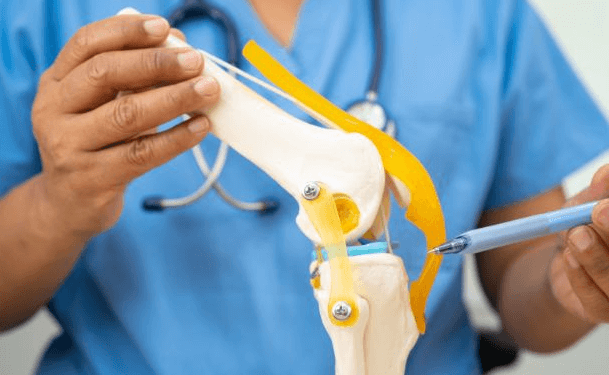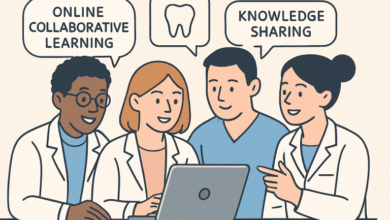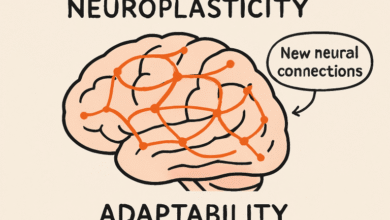Benefits of Early Detection and Treatment for Children’s Orthopedic Conditions

Children’s musculoskeletal systems are in a dynamic state of growth, with bones lengthening and bodies rapidly increasing in strength and coordination. This continual change makes the early years particularly sensitive to orthopedic concerns.
Table of Contents
Understanding Pediatric Orthopedic Conditions
Since the developmental trajectory of bones, joints, and muscles is not yet fixed, timely diagnosis and intervention play a crucial role in guiding their development. Early recognition and prompt treatment help direct a child’s musculoskeletal growth toward healthy, functional patterns, supporting both posture and movement long-term.
Families seeking specialized guidance, consultations, or surgical intervention for their child may consider practitioners at advanced orthopedic surgery options in Tulsa to ensure their child receives expert, individualized care for pediatric needs.
Unlike adults, children may not always vocalize discomfort or report subtle limitations in movement. Some may be too young to describe aches, or they might attribute symptoms to normal play. For this reason, recognizing the early warning signs of musculoskeletal disorders is essential.
When left unchecked, pediatric orthopedic conditions can interrupt regular activities and sports participation, leading to emotional distress as well as physical setbacks. Early detection not only limits the progression of musculoskeletal deformities but also promotes quicker, smoother recoveries, safeguarding the child’s ability to live an active, fulfilling life from childhood into adulthood.
Common Orthopedic Conditions in Children
Pediatric orthopedic conditions are varied and range from mild to severe, but some disorders consistently appear in clinical practice and reap the greatest benefit from early recognition and decisive action.
- Scoliosis: A lateral curvature of the spine, scoliosis most frequently arises during the rapid growth spurts that occur in late childhood and adolescence. Even mild curves can worsen quickly, making routine screenings essential. By diagnosing scoliosis at its onset, physicians and physical therapists can implement monitoring and therapeutic strategies before the condition causes significant structural asymmetry, back pain, or decreased lung function.
- Clubfoot: Presenting as a foot that twists inward or downward at birth, clubfoot is a congenital condition. Without prompt correction, children may develop walking abnormalities or require complex surgery later. However, when addressed in infancy through stretching, casting, and sometimes bracing, the vast majority of children achieve normal mobility and avoid lasting gait abnormalities or joint pain.
- Developmental Dysplasia of the Hip (DDH): This disorder involves the abnormal alignment or instability of the hip joint. DDH can cause uneven leg lengths and limping if left untreated. Early diagnosis via physical exam and imaging enables conservative, non-surgical interventions, such as bracing, which guide the joint back into alignment and spare the need for future surgical procedures.
The Importance of Early Detection
Catching orthopedic conditions in their early stages opens up many possibilities for less invasive, more effective management and optimal long-term outcomes. The advantages are clear and wide-ranging:
- Prevention of Progression: Timely action can halt or greatly slow the advancement of conditions like scoliosis or DDH. This helps prevent severe deformity, chronic pain, or permanent restriction of joint movement, which can negatively affect a child’s independence and athletic participation.
- Enhanced Treatment Outcomes: Children’s bones and tissues are especially adaptable. When issues are addressed early, corrective measures such as bracing or physical therapy are more likely to succeed, sometimes resulting in complete correction or substantial improvement in movement, function, and appearance.
- Reduced Complications: The earlier the intervention, the lower the risk of chronic pain, muscle weakness, joint instability, or the need for complex or repeated surgical procedures later in life. Addressing orthopedic issues promptly often means less time away from school or sports and a happier childhood overall.
Strategies for Early Detection
Proactive measures are essential to guarantee timely recognition and management of orthopedic abnormalities in children, providing them with the best foundation for healthy growth and activity.
- Regular Check-Ups: Routine pediatric visits allow healthcare providers to monitor physical growth, posture, and mobility milestones. Pediatricians are trained to recognize subtle signs of deviation from expected development, referring children to specialists as needed for further evaluation.
- Parental Vigilance: Parents are in the best position to observe daily habits and movement patterns, so their attention is key. Noticing abnormal postures, favoring one side, unusual limping, difficulty running or using stairs, or frequent complaints of pain should prompt discussions with a healthcare provider.
- Educational Programs: Schools can play a vital role by adding routine screening programs, particularly for spinal conditions like scoliosis, into regular health assessments. Such efforts enable the early identification of problems, resulting in timely referrals and interventions for affected students.
Non-Invasive Treatment Options
One of the greatest advantages of detecting pediatric orthopedic issues early is the opportunity to utilize non-invasive or minimally invasive therapies.
When caught at an incipient stage, many musculoskeletal disorders can be addressed with supportive care, physical training, and assistive devices, sparing young patients from pain and invasive surgery:
- Physical Therapy: Individualized exercise regimens and stretching routines, often managed by pediatric physical therapists, can strengthen underdeveloped muscle groups, enhance joint mobility, and correct movement patterns. Therapy also encourages balanced muscular development on each side of the body.
- Bracing: Orthopedic braces or splints are commonly used to gently guide bone and joint positioning. For conditions like scoliosis or hip dysplasia, bracing during growth spurts helps maintain alignment and function as children grow.
- Casting: Serial casting is frequently applied in cases like clubfoot. This involves gradually adjusting the position of the foot or limb through a series of casts, each applied for a set interval, until optimal alignment is achieved.
Role of Healthcare Providers
Healthcare professionals are indispensable partners for families navigating child health issues. In addition to thorough physical exams and growth monitoring during routine care, they serve as invaluable educators—teaching parents how to spot early warning signs of orthopedic problems, what to expect with treatment, and when to seek specialized intervention.
Providers work closely with schools to implement effective screening, ensuring that children who may otherwise slip through the cracks are identified early and referred to the necessary resources or specialists.
See also: Designing Dynamic Training Strategies for Continuous Growth in Contemporary Dental Practices
Conclusion
The lifelong health and mobility of every child depend on early recognition and prompt management of developmental orthopedic conditions. By combining regular screenings, vigilant parenting, and timely collaboration with a multidisciplinary care team, families give their children the best chance for robust, pain-free growth and lasting function.
For further information about orthopedic screening and children’s musculoskeletal health, valuable guidance is available from resources such as the American Academy of Pediatrics and the Mayo Clinic’s Pediatric Orthopedic Surgery Department.



